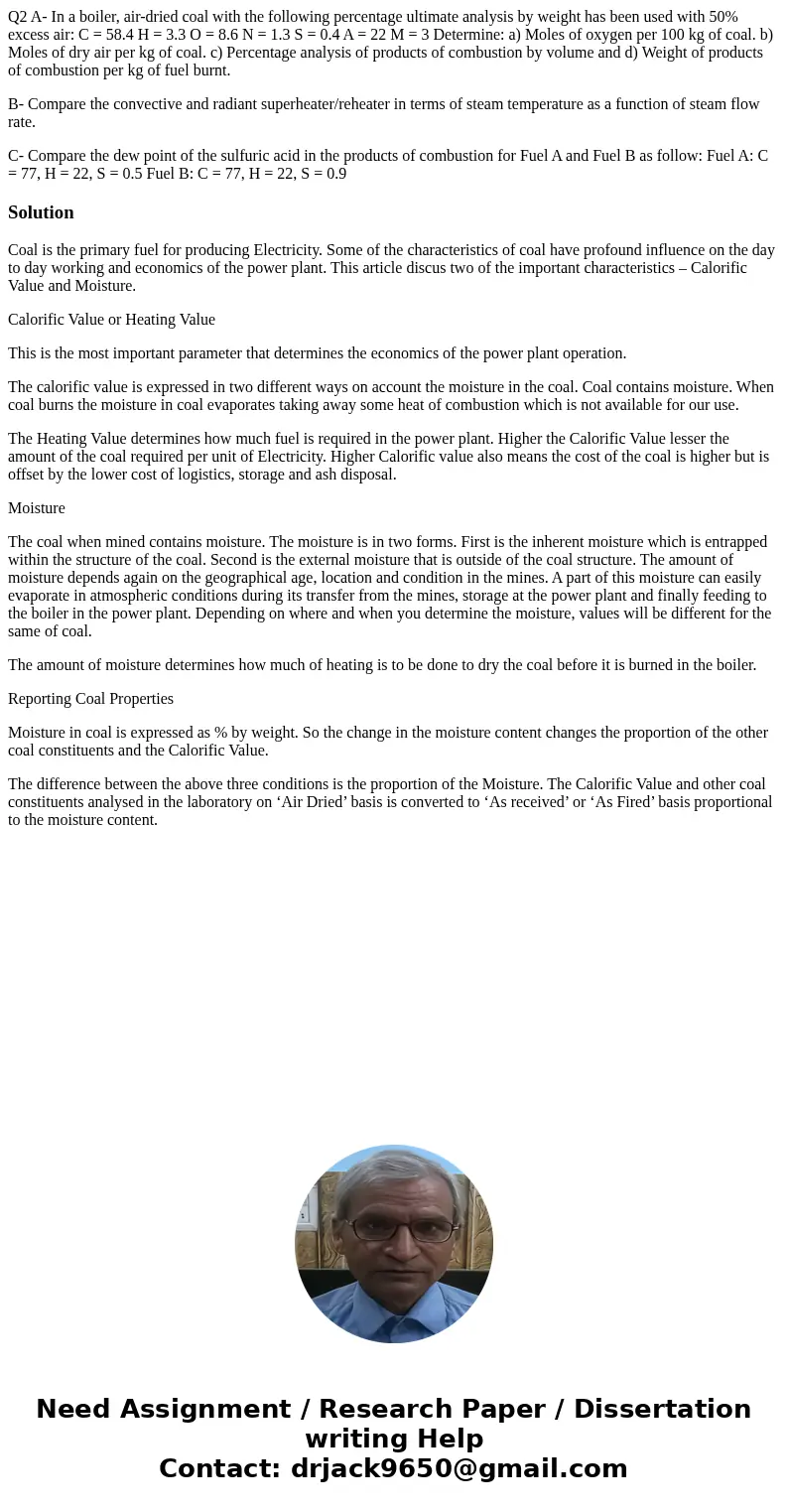Q2 A In a boiler airdried coal with the following percentage
Q2 A- In a boiler, air-dried coal with the following percentage ultimate analysis by weight has been used with 50% excess air: C = 58.4 H = 3.3 O = 8.6 N = 1.3 S = 0.4 A = 22 M = 3 Determine: a) Moles of oxygen per 100 kg of coal. b) Moles of dry air per kg of coal. c) Percentage analysis of products of combustion by volume and d) Weight of products of combustion per kg of fuel burnt.
B- Compare the convective and radiant superheater/reheater in terms of steam temperature as a function of steam flow rate.
C- Compare the dew point of the sulfuric acid in the products of combustion for Fuel A and Fuel B as follow: Fuel A: C = 77, H = 22, S = 0.5 Fuel B: C = 77, H = 22, S = 0.9
Solution
Coal is the primary fuel for producing Electricity. Some of the characteristics of coal have profound influence on the day to day working and economics of the power plant. This article discus two of the important characteristics – Calorific Value and Moisture.
Calorific Value or Heating Value
This is the most important parameter that determines the economics of the power plant operation.
The calorific value is expressed in two different ways on account the moisture in the coal. Coal contains moisture. When coal burns the moisture in coal evaporates taking away some heat of combustion which is not available for our use.
The Heating Value determines how much fuel is required in the power plant. Higher the Calorific Value lesser the amount of the coal required per unit of Electricity. Higher Calorific value also means the cost of the coal is higher but is offset by the lower cost of logistics, storage and ash disposal.
Moisture
The coal when mined contains moisture. The moisture is in two forms. First is the inherent moisture which is entrapped within the structure of the coal. Second is the external moisture that is outside of the coal structure. The amount of moisture depends again on the geographical age, location and condition in the mines. A part of this moisture can easily evaporate in atmospheric conditions during its transfer from the mines, storage at the power plant and finally feeding to the boiler in the power plant. Depending on where and when you determine the moisture, values will be different for the same of coal.
The amount of moisture determines how much of heating is to be done to dry the coal before it is burned in the boiler.
Reporting Coal Properties
Moisture in coal is expressed as % by weight. So the change in the moisture content changes the proportion of the other coal constituents and the Calorific Value.
The difference between the above three conditions is the proportion of the Moisture. The Calorific Value and other coal constituents analysed in the laboratory on ‘Air Dried’ basis is converted to ‘As received’ or ‘As Fired’ basis proportional to the moisture content.

 Homework Sourse
Homework Sourse